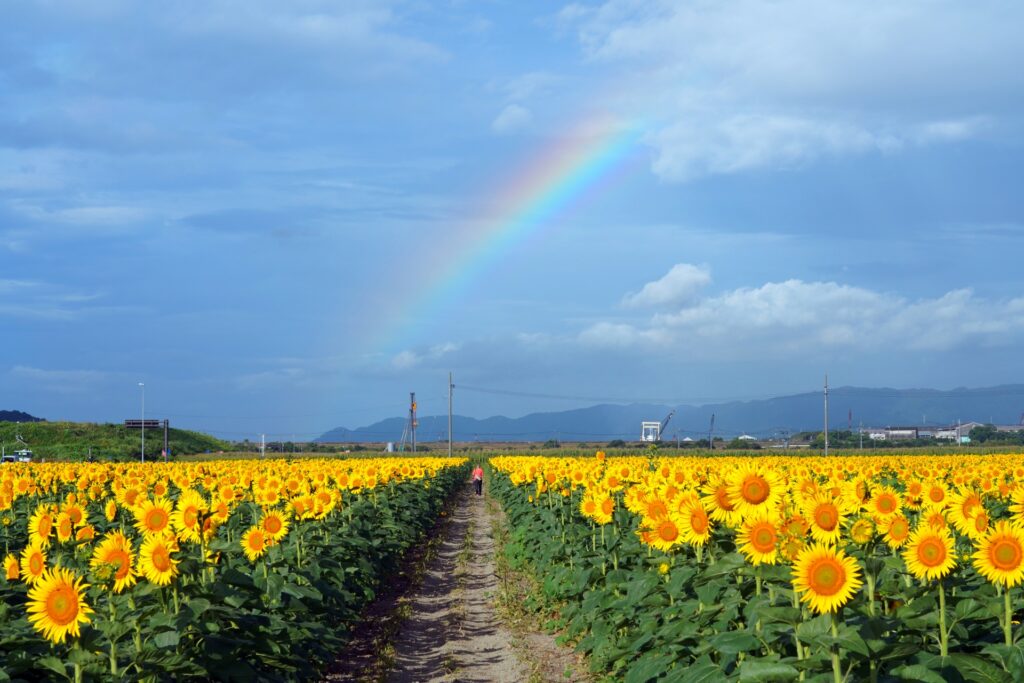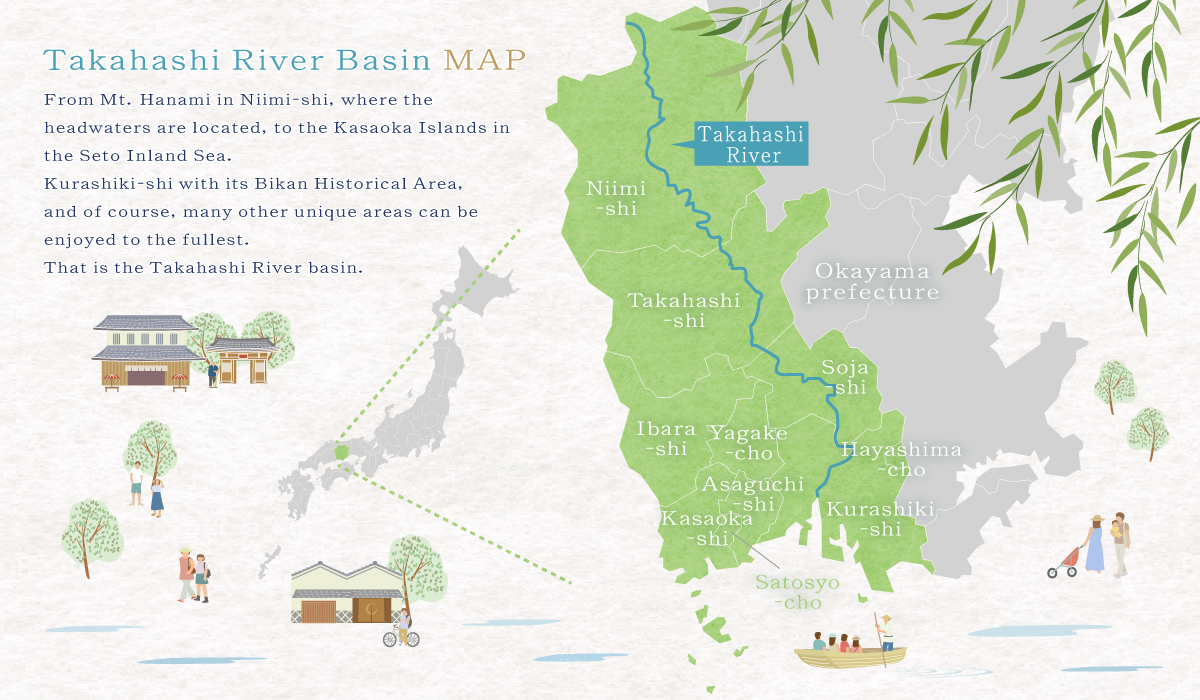About Kurashiki City
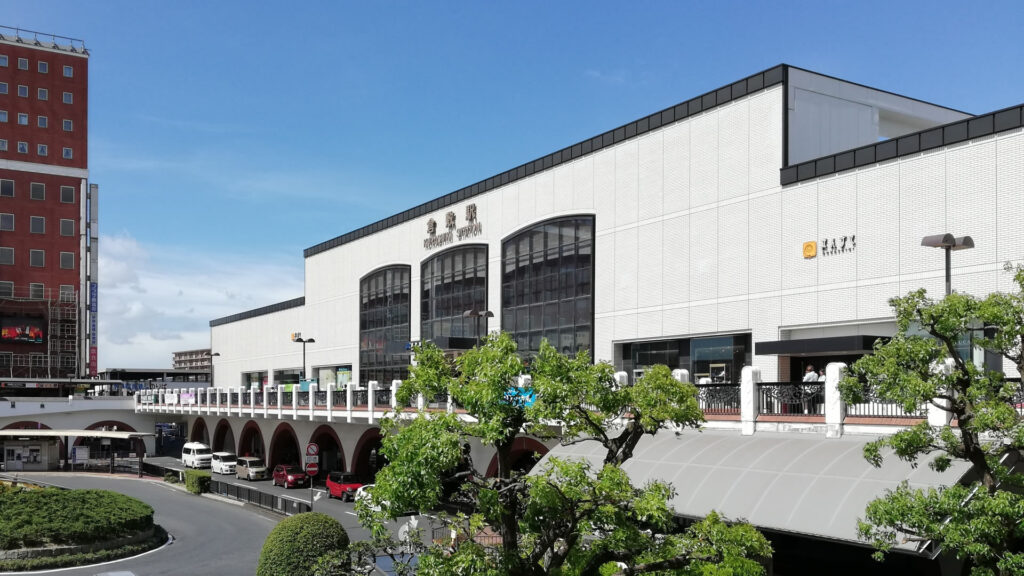
Blessed with tourism resources and diverse industries and diverse industries, and a town blessed with a rich “life
Located in the southern part of Okayama Prefecture and blessed with a mild climate, it is a core city with the third largest population in the Chugoku region.
The city was established in the early Showa period (early 20th century), and has since developed by merging with neighboring towns and cities, absorbing a diverse history and culture.
Bikan Historical Area
A townscape preservation district where white walls and modern architecture blend to create a sense of history and culture.
The Kurashiki River is lined with beautiful white-walled warehouses that have flourished along the Kurashiki River since the Edo period (1603-1868), and cultural facilities such as the Ohara Museum of Art, Japan’s first private museum focusing on Western art, and the Kurashiki Mingeikan, the second museum to be opened in Japan after the Japan Folk Art Museum.
There are also several registered tangible cultural properties in the area, including a bank built in the early Showa period (1926-1989).
In recent years, new facilities such as cafes, restaurants, and general stores have opened in renovated townhouses and warehouses, making this an area with a profound charm that one will never get tired of no matter how many times one visits.
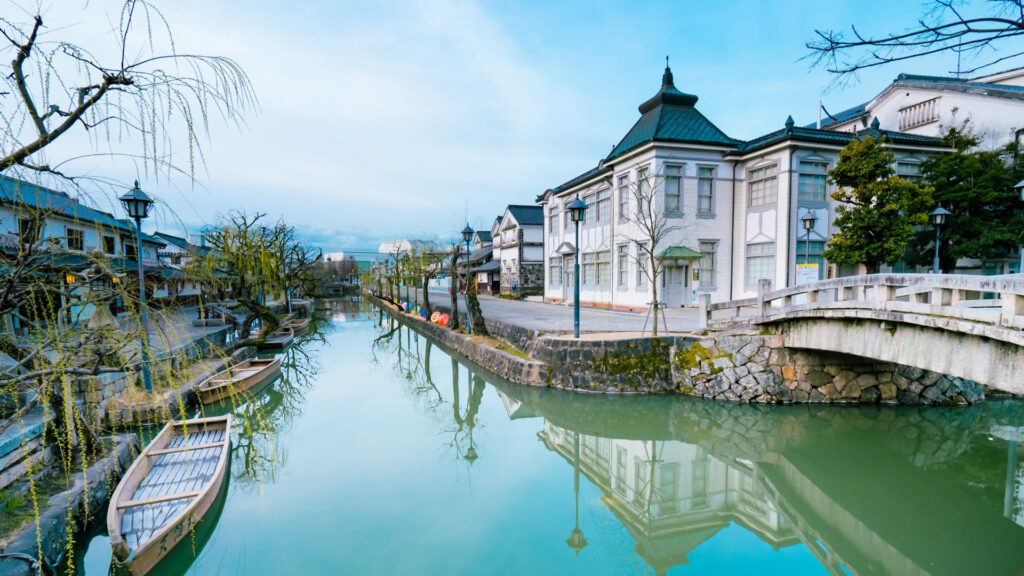
Mt. Washu
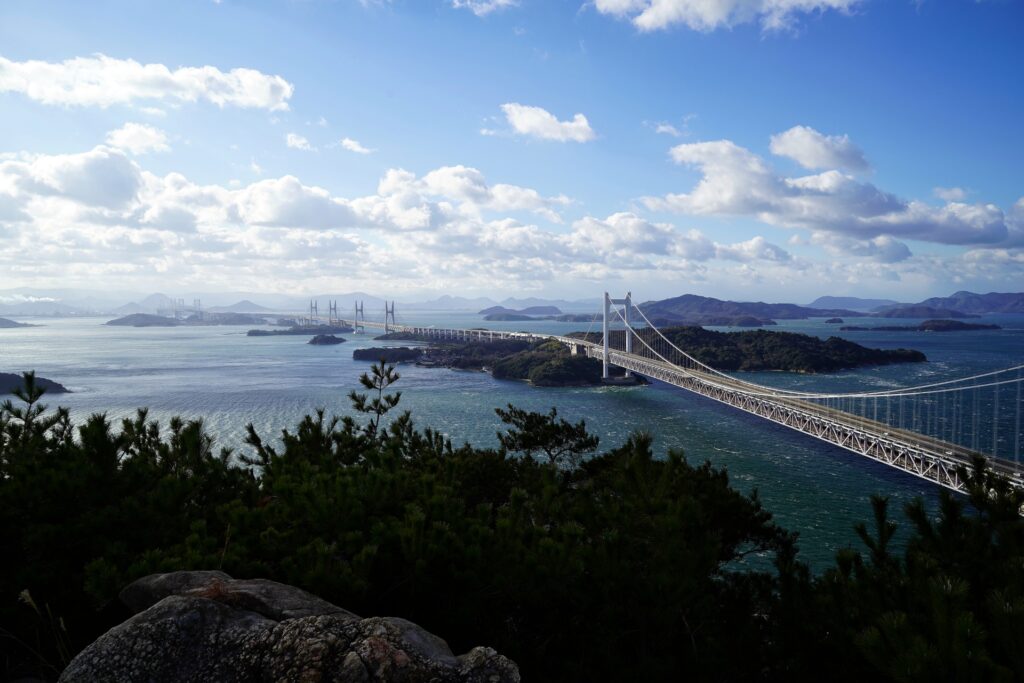
Popular tourist spot with a panoramic view of the Great Seto Bridge and islands of the Seto Inland Sea.
Mt.Washu, so called because it looks like an eagle spreading its wings.
From the observatory near the top of the mountain, depending on the weather, you can see as far as Shikoku on the other side of the island, the islands of the Seto Inland Sea, the entire view of the Seto-ohashi Bridge, the beautiful sunset that changes with the time of day, and the Seto-ohashi Bridge lit up with lights.
About the Takahashi River Basin
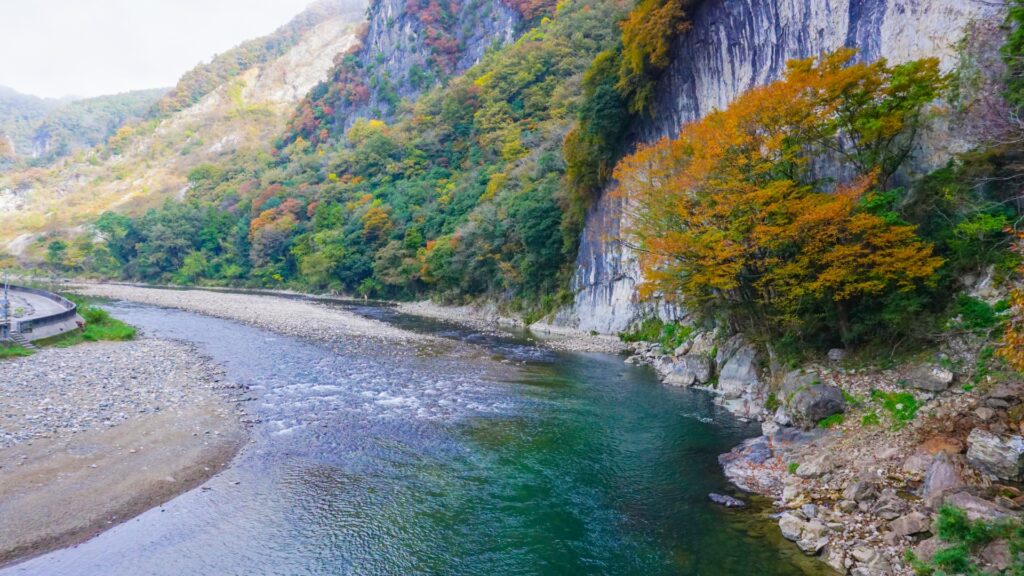
Areas where you can travel to enjoy the tastes of each region, as well as the natural and scenic sights and culture of the area.
The Takahashi River, a first-class river, flows from north to south in the western part of Okayama Prefecture, and its basin is home to 10 cities and towns with rich individuality.
This area is called “Takahashi River Basin” and offers a variety of nature, sightseeing, and gourmet food from the Chugoku Mountains at the headwaters to the islands of the Seto Inland Sea downstream.
About the 10 unique cities and towns
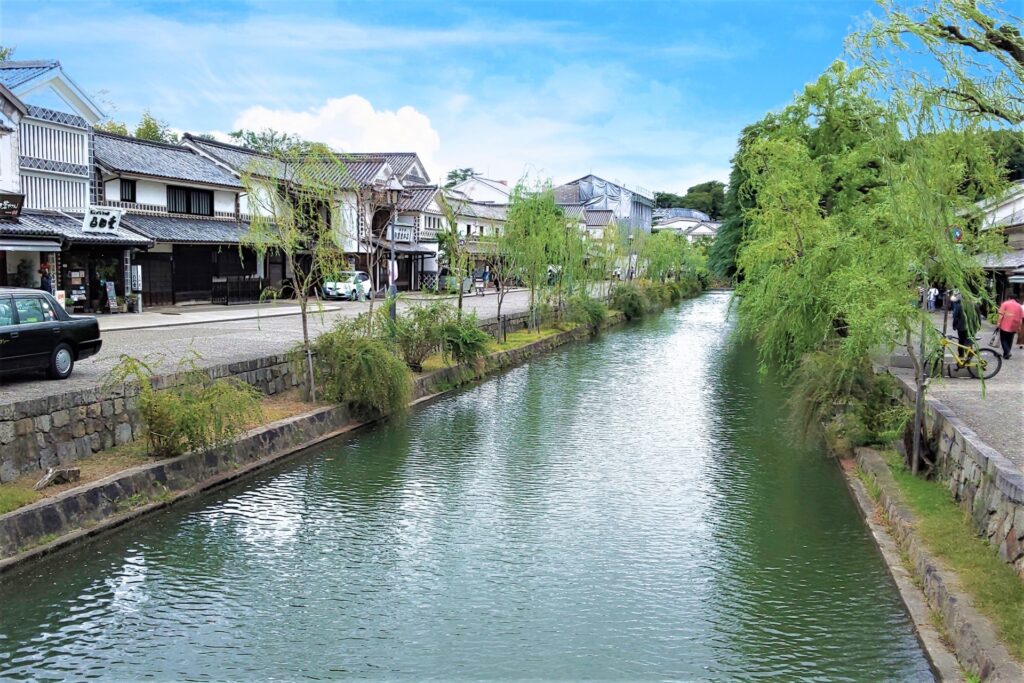
Highlights of Kurashiki-shi
The Kurashiki Bikan Historical Area, located in the center of the city, which flourished in the olden days as a shogunal estate and has preserved its Edo period townscape, is an area with a mysterious charm, where retro-modern modern buildings occasionally appear among the white-walled warehouses and willow trees along the river.
Highlights of Niimi-shi
Located on the upper reaches of the Takahashi River, this city in northern Okayama Prefecture is bordered by the Chugoku Mountains and the Kibi Plateau.
Shiroyama Park, famous for its cherry blossoms, and Niimi Gotenmachi, where the atmosphere of the Edo and Meiji periods can be felt, are located in the central area of the city.
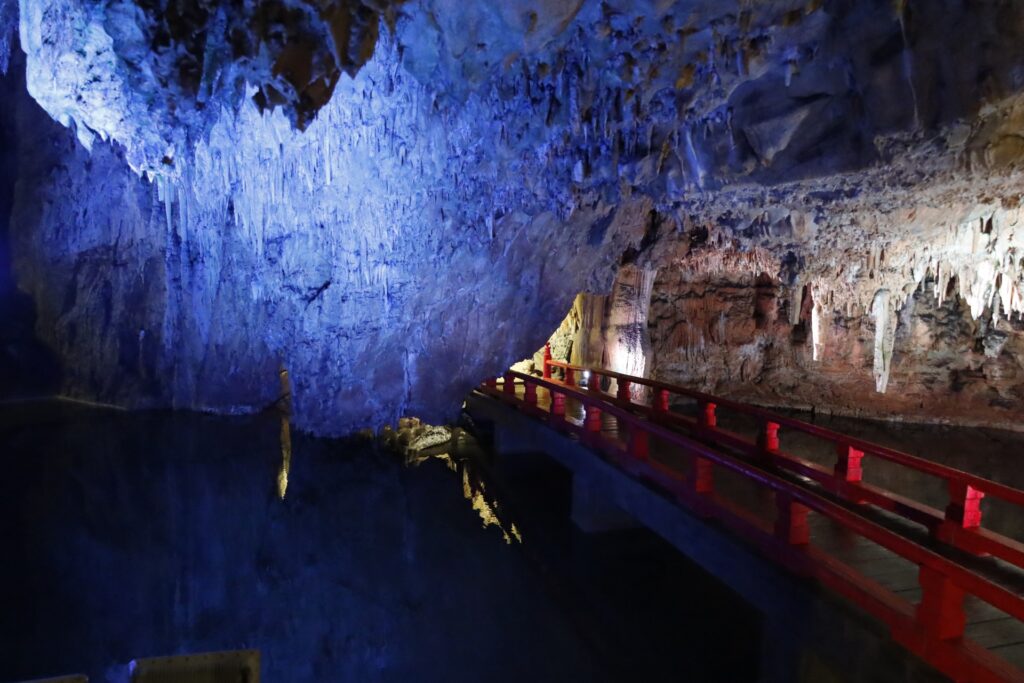
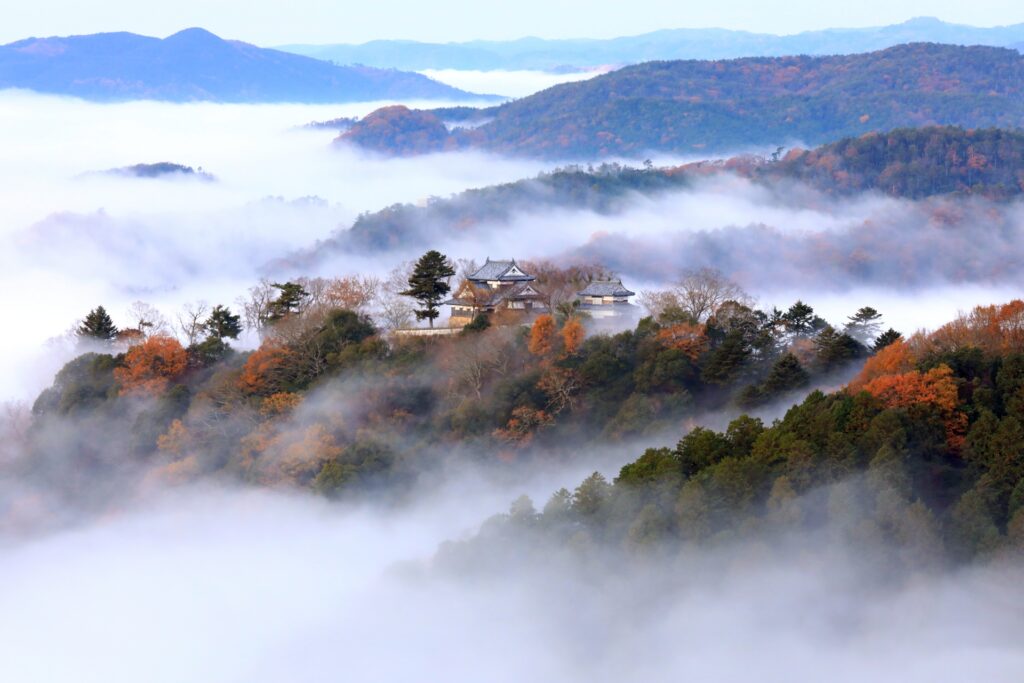
Highlights of Takahashi-shi
With the Takahashi River running north-south through the city, it prospered as a distribution center, and in modern times, it was the center of the Bicchu Matsuyama clan. The castle town is lined with samurai residences, shrines and temples, and town houses, and is called “Little Kyoto” in Bicchu.
Bicchu Matsuyama Castle is called the castle in the sky because the castle tower can be seen floating in a sea of clouds when the conditions are right.
In summer, the Bicchu-Takashi-Matsuyama Dance, the largest Bon dance in Okayama Prefecture, is held here.
In the tributary areas, visitors can enjoy unique cultural facilities such as the Takahashi Naruha Art Museum designed by architect Tadao Ando and the Kibi Kawakami Fureai Manga Museum, where a collection of over 120,000 manga books can be read.
FUKIYA Furusato Village in the northern part of the city, with its reddish-bronze Ishu tiles and bengara-colored exterior, offers a retro Showa-era atmosphere with its bonnet buses and a variety of events such as a bengara-dyeing experience and collaboration with art.
Highlights of Soja-shi
Located in the center of southern Okayama Prefecture, it is believed to have been the center of the ancient kingdom of Kibi.
The city is home to the Zouzan burial mound, the fourth largest in Japan, and Onino Castle, the site of an ancient mountain castle, and the legend of Kibitsuhiko-no-mikoto and Ura, which is said to be the origin of the Momotaro legend.
The five-story pagoda of Bitchu Kokubunji Temple is a national important cultural property and the only five-story pagoda in Okayama Prefecture.
Hofukuji Temple, the birthplace of Sesshu, a famous ink and wash painter, is also famous for its autumn foliage, and there is a legend that a rat he drew in tears as a child began to move.
In the northern part of the area, there is Gogei, a scenic spot where clear streams and autumn leaves are in harmony, and the area is rich in nature, history, and the romance of ancient times.
In winter, the “Soja Kibiji Marathon,” the largest marathon in Chugoku and Shikoku, is held along the historically romantic Kibiji Course.
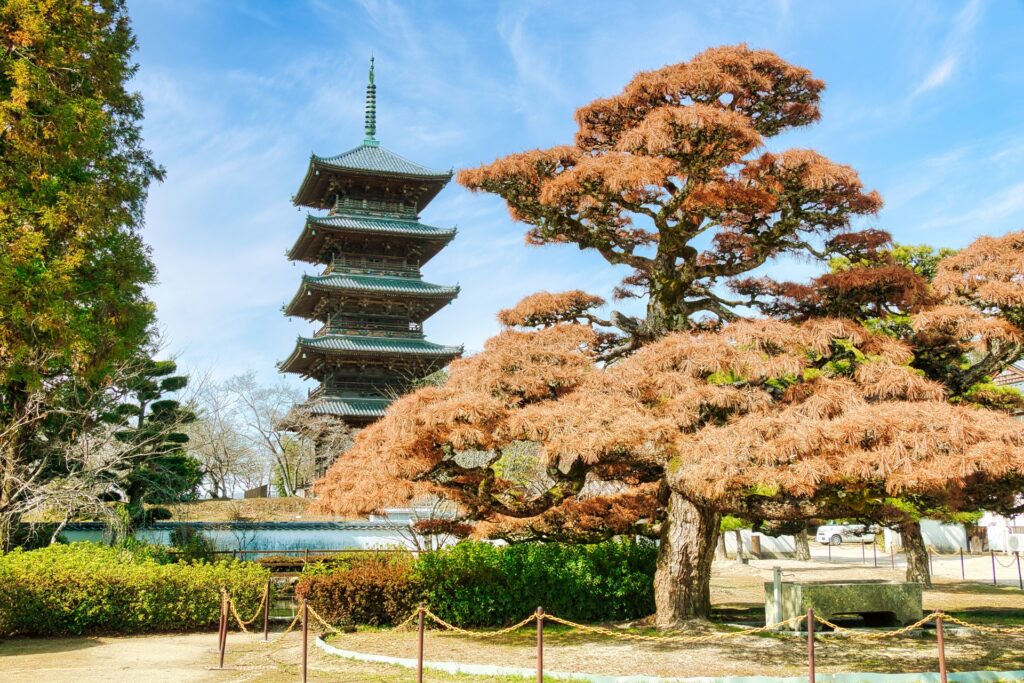
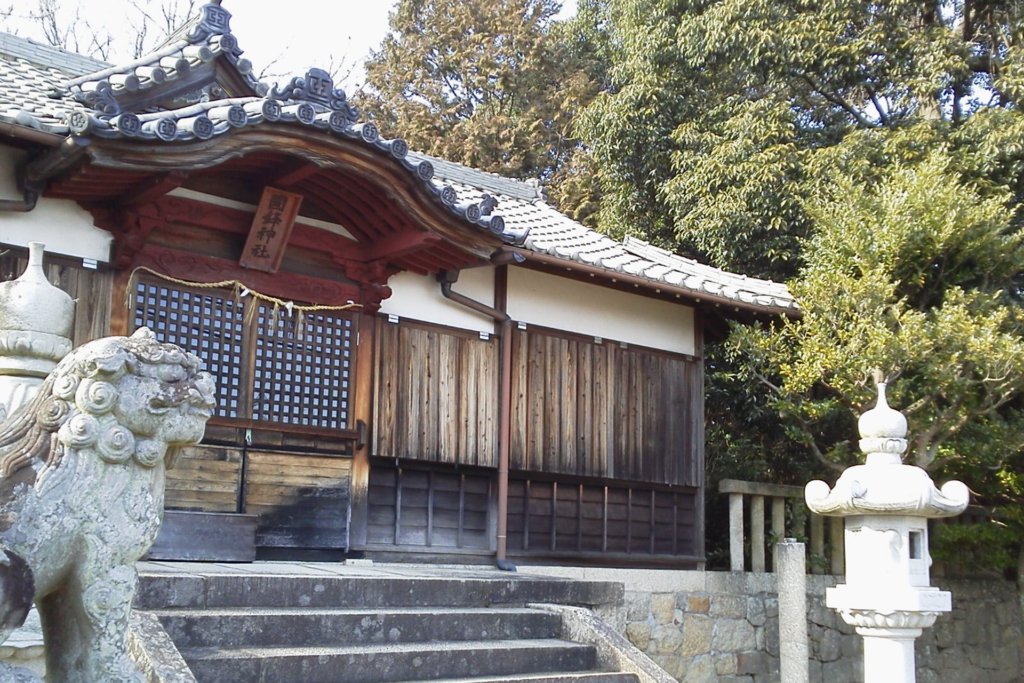
Highlights of Hayashima Town
Although it is the smallest town in Okayama Prefecture in terms of area, it is located between Okayama City and Kurashiki City and boasts one of the largest population densities in the prefecture as a bedroom town.
Once a tideland, the land was created through land reclamation and was ruled by the Hatamoto Togawa family during the Edo period.
A 10-kilometer long historical walking trail called “Furo no michi” has been established where visitors can enjoy the history, culture, and nature of Hayashima, and there are four different courses where visitors can enjoy historical sites and scenery.
The town has developed as a production center of rush grass products, and the Hayashima-Kurashiki Hanagoza Festival is held in summer, where all rush grass products are exhibited and sold.
Visitors can experience making small rush grass products at tourist facilities in the town.
Highlights of Yakage-cho
Located in the southwestern part of Okayama Prefecture, the clear waters of the Oda River, a tributary of the Takahashi River, flow through the center of the town.
In the Edo period (1603-1867), the town flourished as an inn town on the old Sanyo Road, and the former Yakage main inn, Ishii Family Residence, and the former Yakage side inn, Takakusa Family Residence, are both designated as National Important Cultural Properties, and Yakage is the only town in Japan where both the main inn and side inn remain as important cultural properties.
Around the highway, there are inns that have been renovated from old private homes, where visitors can stay overnight and feel the atmosphere of an inn town that has continued for more than 300 years.
In autumn, the “Yakage no Shukuba Matsuri Daimyo Gyoretsu (feudal lord’s procession)” is held, in which a gorgeous procession of feudal lords parades through the downtown Yakage area.
Nearby is the “Sanyo-do Yakage Yado,” a roadside station supervised by Eiji Mitooka, an industrial designer from Okayama who designed the luxury sleeper train “Nanatsuboshi in Kyushu” and other trains, where local tourism and products are introduced.
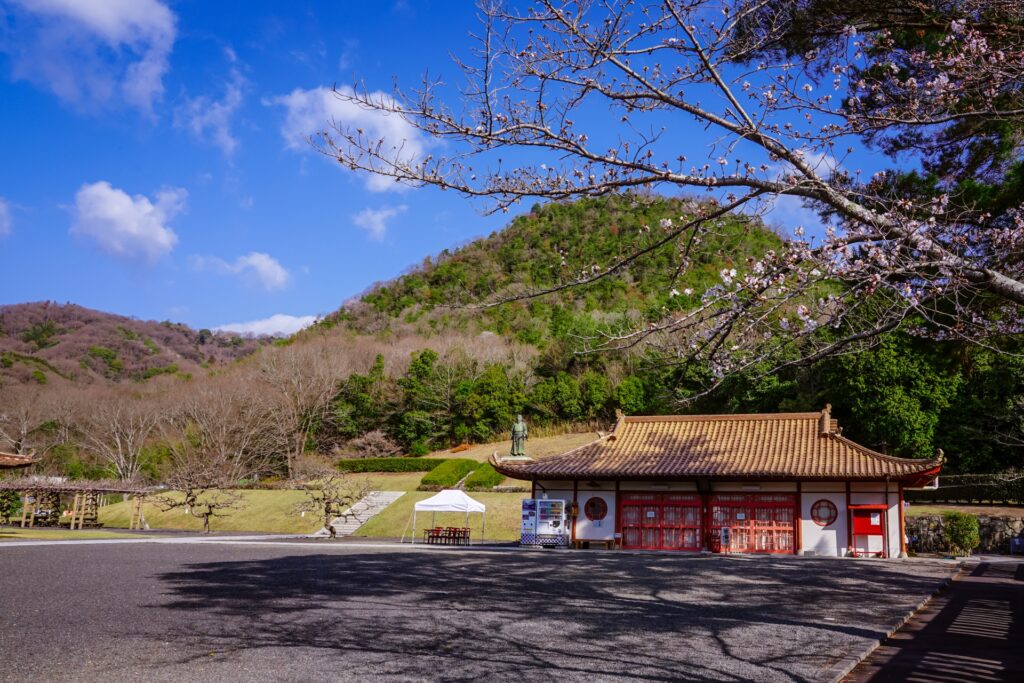
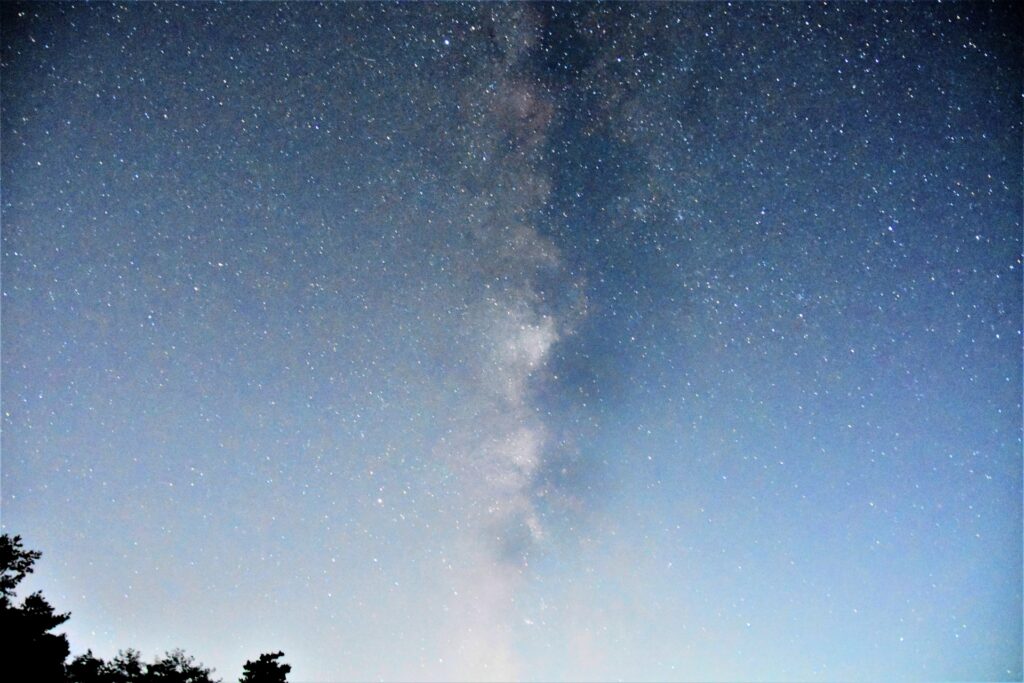
Highlights of Ibara-shi
Located in the southwestern part of Okayama Prefecture, Ibara is situated on the plains of the Oda River basin, a tributary of the Takahashi River, and includes the central city as well as the areas of Yoshii and Mihoshi that were incorporated as a result of the Heisei merger.
Cotton cultivation has flourished in Ibara since the Edo period, and Ibara, which produced Japan’s first denim fabric, is called the “sacred land of denim.
Tenjinkyo, located in the Yoshii area in the northwestern part of the city, offers beautiful seasonal scenery such as mountain cherry blossoms and autumn leaves.
The Mihoshi area in the northeast is an area with a beautiful starry sky, as its name suggests, and has been selected by astronomers as the area with the best starry sky in Japan, and there are facilities for astronomical observation such as the Mihoshi Observatory, one of the leading public observatories in Japan, and the Ibara City Starry Sky Park.
In summer, an event called the “Milky Way Festival” is held, in which 2,000 lanterns are used to recreate the Milky Way on the ground, creating a fantastic spectacle.
Highlights of Asakuchi City
The city was formed by the merger of three towns in the southwestern part of the prefecture: Kinko-cho, Yorishima-cho, and Kamogata-cho.
Oyster farming is thriving in the Yorishima area in the south. In winter, people from inside and outside of the prefecture flock to Yorishima to buy the oysters, which are known for their large size and rich flavor.
Blessed by its proximity to the sea and abundant water, Asakuchi City is home to a number of sake breweries, and visitors can enjoy tours of the breweries.
The mountains as well as the sea offer a wonderful view, and the observatory at the Yoshozan Park has been selected as one of the 100 best night views in Japan, offering a broad view of the Mizushima Industrial Zone in the Seto Inland Sea.
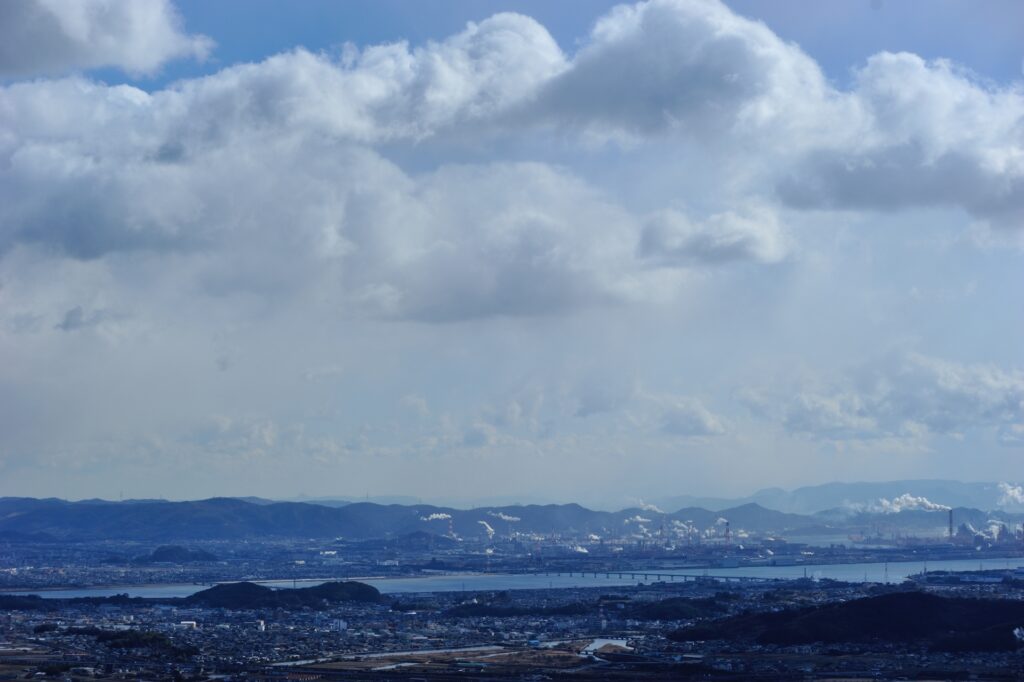
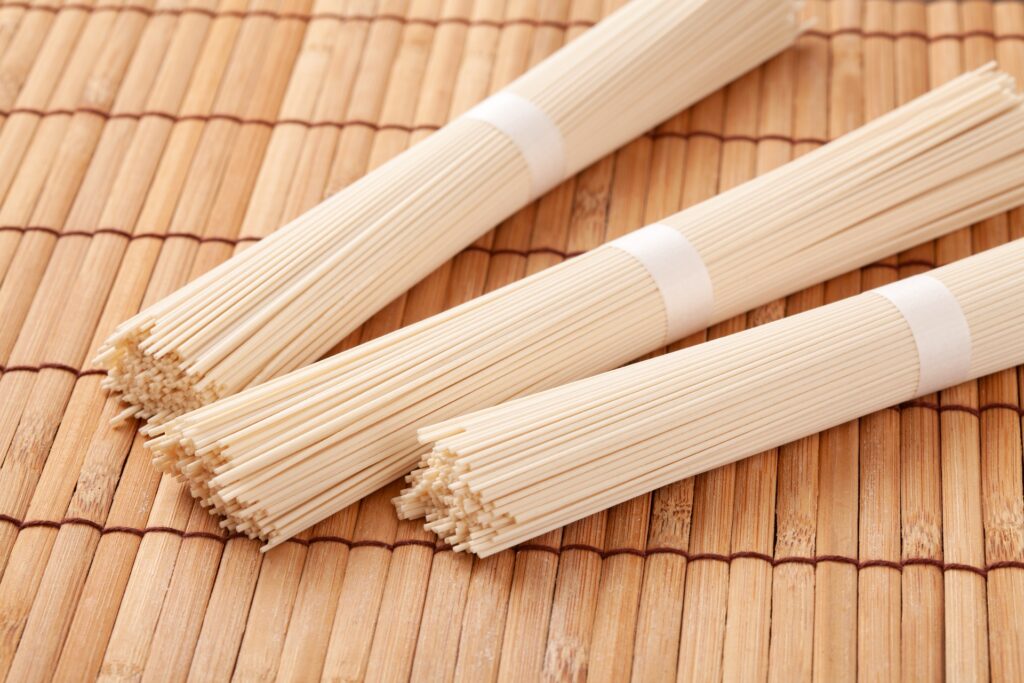
Highlights of Satosho-cho
Satosho Town is located between Asaguchi City and Kasaoka City.
In the town, there are factories for somen noodles, sake, freeze-dried products, and western-style confectionery, and there is also a directly managed store that sells western-style confectionery outlets.
In the fall, the town holds an event called the “Industrial Culture Festival” where all the businesses and associations of commerce and industry in the town gather to sell and promote their products and specialties.
Highlights of Kasaoka-shi
Kasaoka City is a port town facing the Seto Inland Sea, with the Kasaoka Islands consisting of more than 30 islands offshore.
The present urban area was originally the sea, and has expanded in area through land reclamation.
The tidal flats along the coast are breeding grounds for horseshoe crabs, which are said to be living fossils, and there is a horseshoe crab museum where they are bred, studied, and exhibited.
At Kasaoka Bay Farm, a roadside station located on reclaimed land, visitors can enjoy an overwhelming and spectacular flower garden with 1 million sunflowers, 10 million rape blossoms, and 30 million cosmos.
The Kasaoka Islands are rich in individuality and character, including Shiraishi Island, where marine sports can be enjoyed; Manabe Island, which has been used as a movie location; Kitagijima Island, where granite processing and the traditional custom of Nagashi Hina (floating dolls) remain; Takashima, where beautiful azaleas can be seen; Tobishima, which consists of Oobishima and Kobishima and is decorated with camellia flowers; and Rokushima, the southernmost island of Okayama Prefecture, with a white lighthouse as its symbol. There are seven inhabited islands.
There are about 30 restaurants in the city where you can enjoy Kasaoka ramen, the soul food of Kasaoka citizens, which consists of soy sauce soup with chicken stock and boiled chicken chashu (pork) on top.
